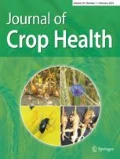Zusammenfassung:
Vor dem Hintergrund der Diskussion um die Einführung von Mykotoxin-Grenzwerten wurden in Rheinland Pfalz in den Jahren 1999 bis 2002 umfangreiche Erhebungen zum Fusariumauftreten und zur Deoxynivalenol-Belastung von Getreide-Ernteproben durchgeführt. Erhöhte Befallsgefahr bestand vor allem in Jahren mit regnerischem Wetter zur Zeit der Getreideblüte. Winterweizen war insbesondere nach Mais-Vorfrucht (14% der Weizenanbaufläche) und in Verbindung mit pflugloser Bodenbearbeitung nach Mais (3% der Weizenanbaufläche) gefährdet. Nach anderen Vorfrüchten war das Befallsrisiko in Winterweizen eher gering. Die mittleren DON-Werte lagen dann jahresabhängig bei 0,03 bis 0,17 μg/g Mehl und der Anteil von Ernteproben mit DON-Werten über 0,5 μg/g Mehl war mit zwei bis sieben Prozent gering. Nach den Untersuchungsergebnissen zeigte sich Durumweizen als besonders anfällig für Fusarium und wies auch in „Nicht-Befalls-Jahren“ stärkere Fusarium- und Mykotoxin-Belastungen auf. Bei den anderen Getreidearten traten, von vereinzelten Ausnahmen abgesehen, keine Fusarium-Probleme auf.
Summary:
With respect to the implementation of maximum residue levels of different mycotoxins a monitoring program was performed from 1999 to 2002 to assess the occurence of Fusarium head blight (FHB) and deoxynivalenol levels (DON) in cereal crops of Rhineland-Palatinate. Rainfall during cereal flowering resulted in higher infestation levels and DON contents of grains. FHB and DON were increased in winter wheat following corn (14% of the regional wheat acreage). Reduced soil tillage further increased the risk (3% of the regional wheat acreage). Other pre crops did not affect FHB and DON contents in wheat. Here, mean DON concentrations ranged from 0,03 to 0,17 μg/g flour, depending on annual weather conditions. DON contents exceeded 0,5 μg/g in two to seven percent of the samples. Durum wheat (Triticum durum) showed a higher susceptibility to FHB and contained more DON than other cereal crops. This could be shown in all years, irrespectively of the annual infection pressure. In spring barley, triticale and oats no relevant FHB and DON values were observed.
Author information
Authors and Affiliations
Corresponding author
Rights and permissions
About this article
Cite this article
Krauthausen, HJ., Weinert, J., Bauermann, W. et al. Mehrjährige Erhebungen zum Vorkommen von Ährenfusarien und dem Mykotoxin Deoxynivalenol in Getreide aus Rheinland-Pfalz. Gesunde Pflanzen 55, 136–143 (2003). https://doi.org/10.1046/j.1439-0345.2003.03014.x
Issue Date:
DOI: https://doi.org/10.1046/j.1439-0345.2003.03014.x

